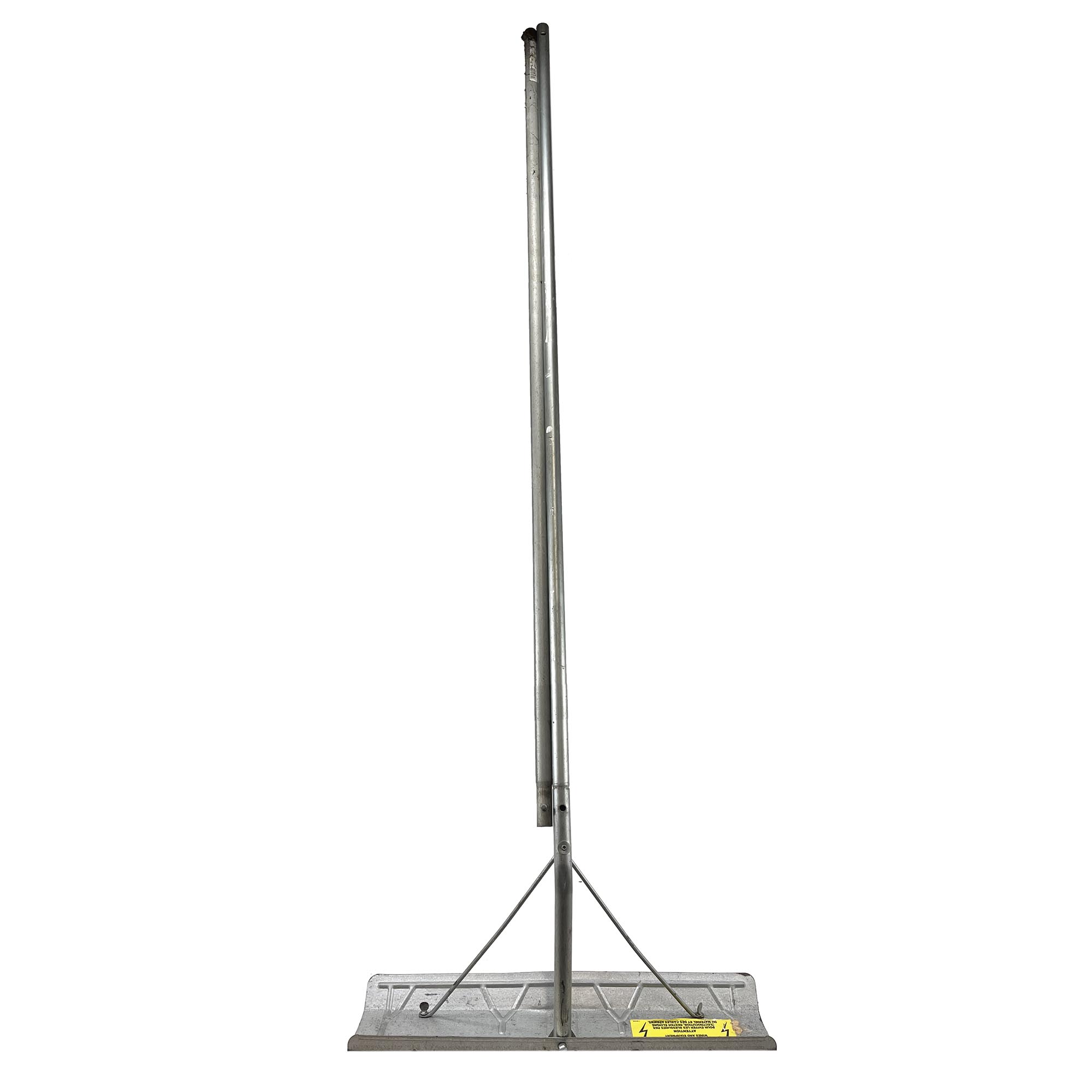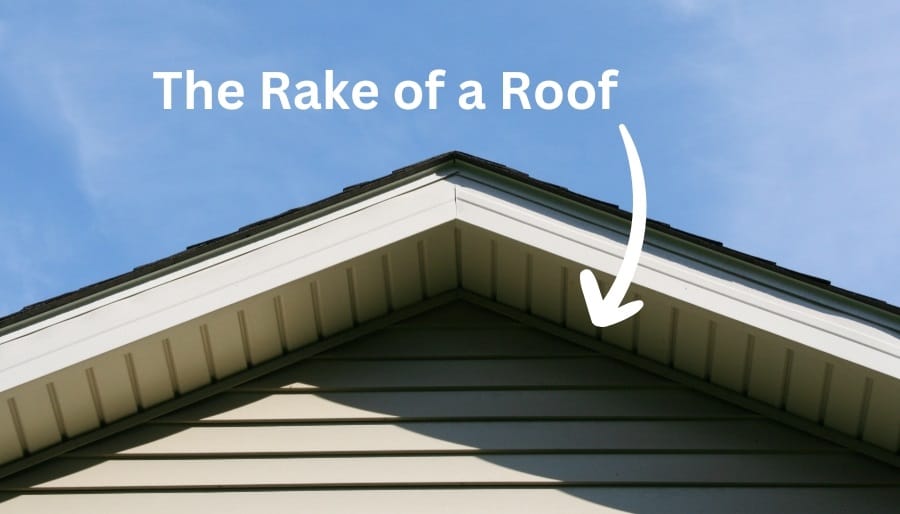Let me tell you something, folks. If you've ever wondered what the heck a rake on roof is and why it matters, you're in the right place. We’re diving deep into this topic, breaking it down step by step so you can understand everything from its purpose to maintenance tips. Whether you're a homeowner, contractor, or just someone curious about roof anatomy, this article’s got you covered.
You might be thinking, “Why should I care about a rake on roof?” Well, my friend, it plays a crucial role in your home’s structure and protection. A rake edge is essentially the sloping edge of a roof that runs from the eaves to the peak. It’s like the finishing touch that not only enhances the aesthetics but also ensures your roof is durable and weather-resistant.
Now, let’s get real here. A lot of people underestimate the importance of maintaining their roof's rake edges. But trust me, if you neglect it, you could be inviting all sorts of problems, from water damage to structural issues. So, buckle up because we’re about to break it down for you in a way that’s easy to understand and actionable.
Read also:Unveiling The Secrets Of Jfk Terminal 4 Customs Your Ultimate Guide
What Exactly Is a Rake On Roof?
Alright, let’s start with the basics. A rake on roof refers to the vertical edge of a roof that runs up the slope from the eaves to the ridge. Think of it as the side border of your roof. It’s not just there for show; it serves a vital function in protecting your home from the elements.
Here’s the deal: rake edges are often exposed to harsh weather conditions, like wind, rain, and snow. This makes them more susceptible to damage if they’re not properly maintained. That’s why understanding what they are and how to take care of them is super important.
Now, let’s break it down even further. A well-maintained rake edge can:
- Prevent water infiltration
- Protect against wind damage
- Enhance the overall appearance of your roof
- Extend the lifespan of your roof
Why Is It Important to Maintain Your Rake Edges?
Here’s the thing, folks. Your roof’s rake edges are like the first line of defense against Mother Nature. If they’re in bad shape, your entire roof system could be at risk. Let me explain why maintaining them is so crucial.
First off, damaged rake edges can lead to water leaks. And as we all know, water damage inside your home is no joke. It can cause mold growth, rot, and even structural issues. Plus, it can be a real pain to fix, not to mention expensive.
Secondly, poorly maintained rake edges can compromise the integrity of your roof. This means that over time, your roof might not perform as well as it should, leaving you vulnerable to all sorts of problems. So, taking care of your rake edges is not just about aesthetics; it’s about protecting your investment.
Read also:Is Adam Schiff Married With Children Unveiling The Personal Life Of The Prominent Politician
Common Issues with Rake On Roof
Let’s talk about some of the common problems you might encounter with your rake edges. These issues can creep up if you’re not paying attention, so it’s good to be aware of them.
Water Damage
Water damage is probably the most common issue when it comes to rake edges. If the flashing or underlayment isn’t installed correctly, water can seep into your home, causing all sorts of havoc. This is why it’s important to have a professional inspect your roof regularly.
Wind Damage
Strong winds can wreak havoc on your rake edges, especially if they’re not properly secured. This can lead to loose shingles or even missing sections of the roof. In extreme cases, it can compromise the entire roof structure.
Rot and Decay
Over time, moisture can cause rot and decay in the wood used for rake edges. This is particularly common in areas with high humidity or frequent rainfall. If left unchecked, it can weaken the entire roof system.
How to Inspect Your Rake Edges
Now that you know the potential issues, let’s talk about how you can inspect your rake edges. Regular inspections are key to catching problems early and preventing bigger headaches down the road.
Here’s what you should look for during an inspection:
- Loose or missing shingles
- Cracked or damaged flashing
- Signs of water damage, like discoloration or mold
- Loose or deteriorating wood
It’s also a good idea to climb up and take a closer look if you’re comfortable doing so. Just make sure you’re safe and have the proper equipment. If you’re not sure what to look for, don’t hesitate to call in a professional.
Materials Used for Rake On Roof
When it comes to materials, there are several options for constructing and maintaining rake edges. Each has its pros and cons, so it’s important to choose the right one for your specific needs.
Wood
Wood is a classic choice for rake edges. It’s affordable, easy to work with, and provides a natural look. However, it’s also prone to rot and decay if not properly maintained.
Aluminum
Aluminum is another popular option. It’s lightweight, durable, and resistant to rust. Plus, it’s relatively easy to install. The downside is that it can be more expensive than wood.
Vinyl
Vinyl is becoming increasingly popular due to its low maintenance requirements. It’s resistant to moisture, rot, and insect damage. However, it may not be as strong as other materials and can crack in extreme temperatures.
Cost Considerations
Let’s talk money, folks. The cost of maintaining or repairing your rake edges can vary depending on several factors, including the size of your roof, the materials used, and the extent of the damage.
On average, you can expect to pay anywhere from $500 to $2,000 for a professional inspection and repair. If you’re doing it yourself, the cost will be lower, but you’ll need to factor in the time and effort required.
Remember, prevention is always cheaper than repair. Regular maintenance can save you a ton of money in the long run, so it’s worth investing in it now.
DIY Tips for Maintaining Rake Edges
If you’re the handy type, there are a few things you can do yourself to maintain your rake edges. Just keep in mind that some tasks might require professional help, especially if you’re dealing with extensive damage.
Here are a few tips:
- Regularly clean debris from your gutters and roof
- Inspect for loose or damaged shingles and replace them as needed
- Check the flashing and seal any gaps or cracks
- Apply a protective sealant to prevent moisture damage
These simple steps can go a long way in keeping your rake edges in good shape.
Professional Maintenance Services
Now, if you’re not the DIY type or if the damage is beyond your skill level, it’s time to call in the pros. Professional roof maintenance services can provide a thorough inspection and repair any issues before they become major problems.
When choosing a service, look for one with a good reputation and plenty of experience. Ask for references and check online reviews to ensure you’re getting quality work.
Conclusion
So there you have it, folks. The rake on roof might not be the most glamorous part of your home, but it’s certainly one of the most important. By understanding what it is, why it matters, and how to maintain it, you can protect your home and save yourself a lot of hassle in the long run.
Remember, regular inspections and maintenance are key to keeping your rake edges in top condition. Whether you choose to do it yourself or hire a professional, taking care of your roof is an investment in your home’s future.
So, what are you waiting for? Grab your tools, climb up there, and give your rake edges the love and attention they deserve. And if you have any questions or comments, feel free to drop them below. Let’s keep the conversation going!
Table of Contents
- Rake On Roof: Your Ultimate Guide to Understanding and Maintaining It
- What Exactly Is a Rake On Roof?
- Why Is It Important to Maintain Your Rake Edges?
- Common Issues with Rake On Roof
- Water Damage
- Wind Damage
- Rot and Decay
- How to Inspect Your Rake Edges
- Materials Used for Rake On Roof
- Wood
- Aluminum
- Vinyl
- Cost Considerations
- DIY Tips for Maintaining Rake Edges
- Professional Maintenance Services
- Conclusion


